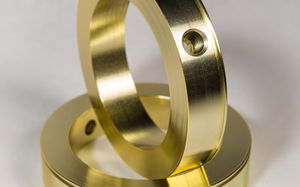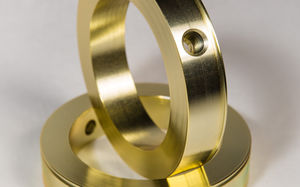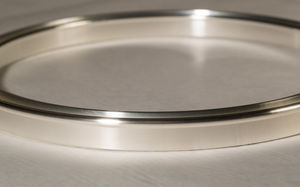
- Industrial machines and equipment
- Surface Treatment
- ISO 9001 gold plating
- Industrial Metal Finishing

- Products
- Catalogs
- News & Trends
- Exhibitions
Electrolytic gold plating ISO 9001

Add to favorites
Compare this product
Characteristics
- Type
- electrolytic
- Certifications
- ISO 9001
Description
Gold
Gold is a precious metal, which means that it will not oxidize in air, so its electrical conductivity stays uniform over long periods of time. Gold plating offers excellent corrosion resistance, good solderability, and when alloyed with cobalt, has very good wear resistance. Gold is commonly used in electrical switch contacts, connector pins and barrels, and other applications where intermittent electrical contact occurs. Below is the most common specification for gold plating.
MIL-G-45204
Type I – 99.7 % gold minimum; hardness grade A, B, or C. Gold plating used for general-purpose, high-reliability electrical contacts, solderability, and wire wrap connections.
Type II – 99.0 % gold minimum; hardness grade B, C, or D. A general-purpose, wear-resistant gold. It will not withstand high-temperature applications because the hardening agents in the gold plating will oxidize.
Type III – 99.9 % gold minimum; hardness grade A only. Gold plating for semiconductor components, nuclear engineering, thermo-compression bonding, and high-temperature application.
Related Searches
- Anodic oxidation
- Aluminum anodic oxidation
- Anodic oxidation with coloring
- Painting
- Passivation
- ISO 9001 anodic oxidation
- Painting on metal
- Galvanizing
- ISO 9001 passivation
- Hot dip galvanizing
- Steel passivation
- Aeronautic anodic oxidation
- Phosphating
- ISO 9001 phosphating
- Steel galvanizing
- Sulfuric anodic oxidation
- Cadmium plating
- Chromic anodic oxidation
- ISO 9001 galvanizing
- Aeronautic passivation
*Prices are pre-tax. They exclude delivery charges and customs duties and do not include additional charges for installation or activation options. Prices are indicative only and may vary by country, with changes to the cost of raw materials and exchange rates.



